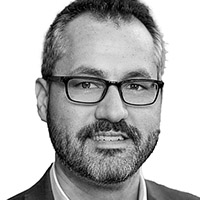Presented by Dr. Matthew McCarville • Chief Information Officer, State of Nebraska
Job hopping in the IT industry has only increased in recent years in both the public and private sectors. There is never a shortage of opportunities from help desk positions to engineers and managers. This has created a complex challenge for IT leaders to retain their staff and not lose valuable experience from their team.
Join us for an open panel conversation on the challenges of staffing today’s IT departments. State of Nebraska CIO Matthew McCarville will lead this discussion with several visionary local leaders. They will share their experiences and offer you tips on how to maintain a team. You will also have a chance to learn more about the best moves as you navigate your own career.
Panelists:
- Derek Kruse, Chief Information Officer, Douglas-Omaha Technology Commission
- Larra Petersen-Lukenda, Chief Operating Officer, CyncHealth
- Deb Sander, Director of Human Resources, City of Omaha
- Nate Watson, CEO, Contemporary Analysis (CAN) and Omaha Data Science Academy (ODSA)
Dr. McCarville is a results-driven executive with a diverse background spanning higher education, government, data analytics, and global consulting. As an accomplished leader, educator, and technology strategist; he is committed to driving positive change and harnessing the power of data and technology for the benefit of organizations, education, and society. He is also dedicated to fostering a culture of innovation, ethical data use, and strategic decision-making in any organization he engages with.
With extensive experience as a Chief Information Officer, Chief Data Officer & Vice Chancellor; Dr. McCarville has managed complex operations, led large teams, and navigated budget challenges/constraints with an innovative mindset. His work in higher education and government has allowed him to play a pivotal role in shaping the strategic direction of information resources and technology to support state, academic, research, and service operations. He is also a 1st generation college student and Creighton Alumni, a 50% Hispanic, an 18 year Hodgkin’s Lymphoma Cancer Survivor, a PCA stroke survivor, prior public assistance program beneficiary, ward of the state, group home, and adoption process ‘alumni.’
Additionally, Dr. McCarville’s experience in global consulting as Vice President at MTX Consulting Group/Maverick AI (MavQ) as well as at PwC Global Consulting involved heading thought leadership and sales management for international business and public sector verticals. He has extensive expertise in implementing data consolidation, systems modernization, AI/ML, as well as a strong track record in business process re-engineering and robotic process automation (RPA).
As the former CDO for the State of Florida, Dr. McCarville’s work in the public sector involved collaborating with various political, agency and county stakeholders and to implement RPA and BPR as well as creating innovative data management strategies that contributed to efficiency, transparency, and data-driven decision-making.

